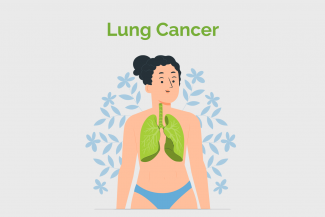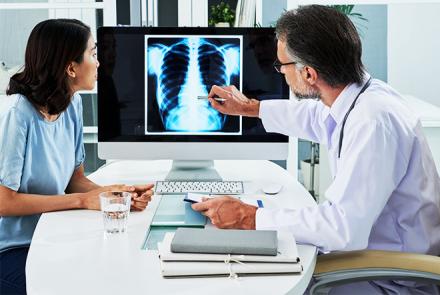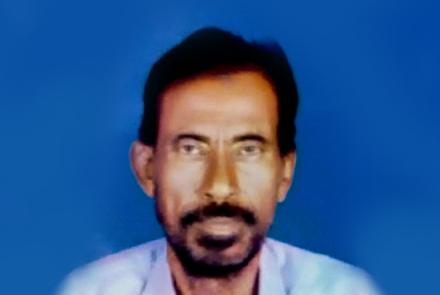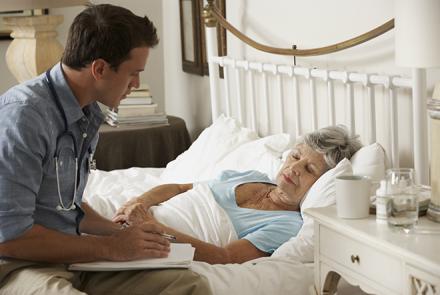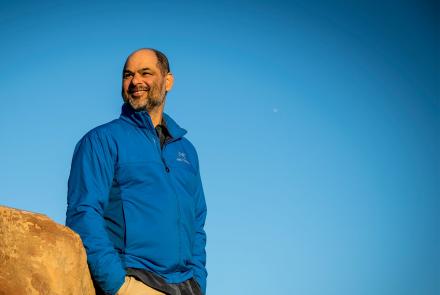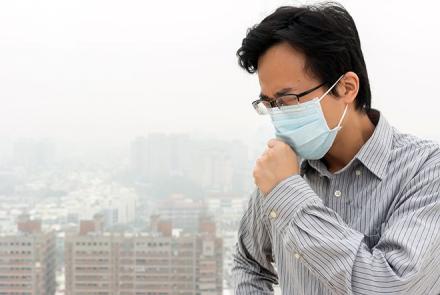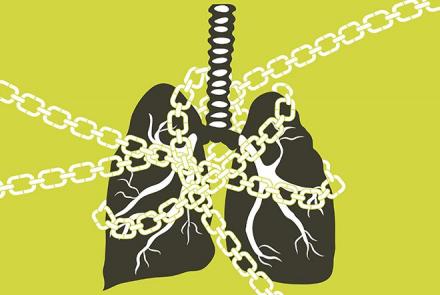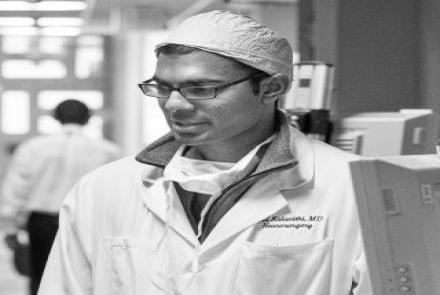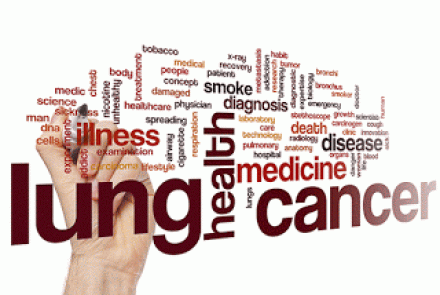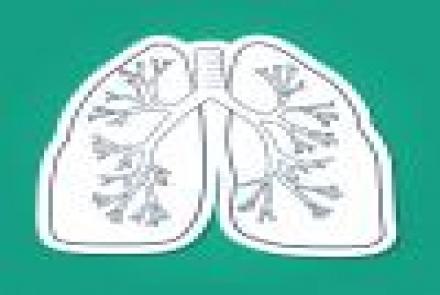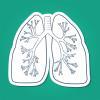
Treatment of non-small cell lung cancer:
Surgery
Surgery is the treatment of choice in NSCLC that has not spread beyond the lung. The goal of surgery is to remove the lung tumour along with the lymph nodes in the chest. The surgeon will remove the tumour with surrounding normal lung tissue. During surgery, serious complications such as excess bleeding, wound infection and pneumonia can occur. Following surgery, patients may experience difficult breathing, shortness of breath, pain and weakness.
Depending on the size and location of the tumour, the surgeon may decide on one of the following surgical procedures:
- Wedge resection: Removal of the lung cancer with a margin of healthy lung tissue around the cancer
- Lobectomy: Lobe of the lung is removed even if the tumour is small, such as in early stage cancer
- Segmentectomy: Removal of a large part of the lung
- Pneumonectomy: If the tumour is close to the chest, the entire lung is removed
Radiation therapy
In Radiation therapy, high-energy rays or particles are used to kill cancer cells. Radiation therapy can be used before surgery to reduce the size of the tumour or after surgery to kill cancer cells that have been left behind after surgery. Radiation therapy can be used to relieve local symptoms such as pain, bleeding or obstruction. There are two types of radiation therapy:
External beam radiation therapy is administered from outside the body, aimed directly on the tumour.
In Brachytherapy, radioactive material is placed inside the body, near the tumour. Brachytherapy is sometimes used to relieve symptoms in airways caused by tumour. Common short-term side effects of radiation are tiredness, nausea, vomiting, hair loss or sunburn-like skin.
Chemotherapy
In chemotherapy, drugs are used to kill cancer cells. Chemotherapy is used in combination with surgery and radiation therapy. Chemotherapy is the main form of treatment in advanced cancer or in patients who are not fit for surgery. Common short-term side effects are tiredness, nausea, vomiting, diarrhea, mouth sores, loss of appetite, hair loss, risk of infection or low blood count.
Targeted Therapy
In targeted therapy, drugs are used which specifically seek cancer cells via biomarkers and destroy them. Therefore there is less damage to normal cells as compared to chemotherapy. It is used most in patients with advanced stage lung cancer and with certain biomarkers. Drugs used include Erlotinib, Afatinib, Geftinib, Bevacizumab, Ceritinib and Crizotinib.
Immunotherapy
In this therapy, the body's own immune system is used to fight the cancer cells. Four main types of drugs that are used fall under Monoclonal antibodies, Checkpoint inhibitors, Vaccines and Adoptive T-cell transfer.
Must Read: Targeted Therapies are the latest weapon for Lung Cancer
Treatment of small cell lung cancer
Small cell lung cancers are rapidly growing cancers and are generally widespread in the body at the time of diagnosis. Chemotherapy is the treatment of choice in most of the SCLC. Surgery is recommended only if the tumour is small and there is no evidence of spread to the lymph nodes. In limited stage SCLC, chemotherapy is combined with radiotherapy.

